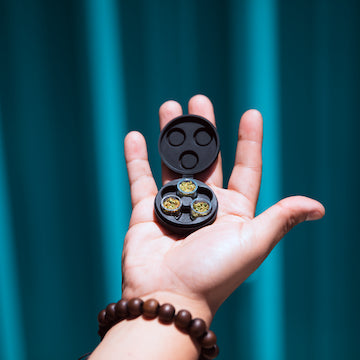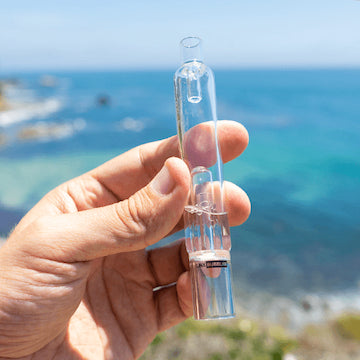Your Cart is Empty
FREE SHIPPING ON U.S. ORDERS OVER $60.
FREE SHIPPING ON U.S. ORDERS OVER $60.
FREE SHIPPING ON U.S. ORDERS OVER $60.
Shop Our Vaporizer Store
Browse through our vaporizer store for award winning portable vaporizers and dab pens. All of the Linx vaporizers are heavy metals tested and certified.
Don't forget to check out our full line of add-ons and accessories that tailor for your different vaping needs.
Get free shipping on US orders over $60.
Shop Our Vaporizer Store
Browse through our vaporizer store for award winning portable vaporizers and dab pens. All of the Linx vaporizers are heavy metals tested and certified.
Don't forget to check out our full line of add-ons and accessories that tailor for your different vaping needs.
Get free shipping on US orders over $60.
Shop Vape Accessories
Shop Vape Accessories
Shop Popular Add-ons
Shop Popular Add-ons
Shop Vape Accessories
Shop Vape Accessories
Shop Popular Add-ons

Eden Switch Dosing Capsule Set
Shop Popular Add-ons

Glass Bubbler

July 25, 2022 3 min read
Have you ever wondered if eating flower would have the same effect as eating edibles? It makes sense (kind of) - Weed gets you high, edibles get you high. So why wouldn't eating weed do the same? Well, this is due to decarboxylation, this is the process that turns the cannabinoids in the plant into THC and CBD, the cannabinoids we all know and love.
Everyone who has smoked, vaporized or made edible weed has put it through this process- sometimes without even realizing what they are doing. Decarboxylation plays a bigger part in the way we consume cannabis than we may realize. Let's get into what the process is, and why it even matters.
What is Decarboxylation?
Decarboxylation (pronounced de-carb-OX-yl-a-tion), is a process that activates the psychoactive compounds in the cannabis plant allowing you to receive all the effects of the cannabinoids.
The term Decarboxylating comes from THCA in the plant having an extra carboxyl ring in its chemical structure. Heat removes that carboxyl ring, or de-carboxylates this THCA into THC. Decarboxylation occurs through heat, but some decarboxylation can occur over time when drying and curing cannabis, or even just after leaving that open jar out in the sun for too long.
Fresh cannabis flower contains an excess of cannabinoid acids that have little to no psychoactive benefit until they are decarboxylated. So you could eat a whole 1/8th of a flower and not feel a thing.
Why does it matter?
Most of us decarboxylate our flower, without even realizing it, we do this by using heat—the flame of a lighter or torch, or the atomizer in a vaporizer, and even oven you use when making edibles
When smoking flower the high temperatures from a flame will instantly decarboxylate the compounds in cannabis, making them immediately available for your body to absorb. This is also known as combustion heating. It is important to note that these higher temperatures could be charring some terpenes and cannabinoids- leaving them ineffective. Terpenes are quite delicate when it comes to their preferred temperatures.
The decarboxylation process is a method used when making edibles.When making edibles, flower is usually heated in an oven first to decarboxylate it, then it is infused into butter, or oil, and all the other fun ways to make edibles.
Decarboxylating weed for edibles is done using a lower temperature for a longer period of time. Doing this allows to keep the cannabinoids and terpenes intact, the ideal temperature for this process is below 245F.
Vaporizing your cannabis, from a dry herb vaporizer, essentially combines the process of smoking & decarboxylating your flower to make edibles.
This means that nothing ever gets wasted and all your flower can be used in various ways!
The process of vaporizing cannabis is done by heating the flower to just below its combustion point. Most of the flower’s terpenes & cannabinoids are melted off into vapor after a few hits, meaning that the plant is still intact & ideally a brownish/green color, compared to just a black and gray ash in a bowl.
The flower in the chamber goes through the process of decarboxylation when you vaporize it, but does not char the flower, so the left behind plant matter can be reused. This is called AVB (Already Vaped Bud), or ABV (Already been vaped).
AVB can be reused in quite a few different ways. You can make edibles, drinks, eat it straight, and even (re)smoke it (if you are desperate).
AVB won't be as potent as flower that is heated in the oven when it comes to making edibles, this is due to the quicker and often higher temps used in the decarboxylation process that happens during vaporization.
Most vaporizers usually have heating options between 200- 450F allowing you to pick your favorite temperature when you vaporize your flower.
There are many types of vaporizers that would work to decarboxylate the flower. The two most popular types of vaporizers are conduction and convection. It is suggested to use a convection vaporizer if you plan to reuse the flower.
In conduction vaporizers, the flower is directly on the heating element & could char the AVB.
Convection vaporizers use hot air to circulate through the flower and evenly vaporize the flower.
Convection vaporizers used to be big and bulky, but now there are plenty of sleek and portable vaporizers out there that make decarbing your flower to make edibles easier than you could imagine.
Check out the Linx Gaia an award-winning portable vaporizer, with full temperature control, ranging from 220-428F or our new Eden Switch.
Comments will be approved before showing up.